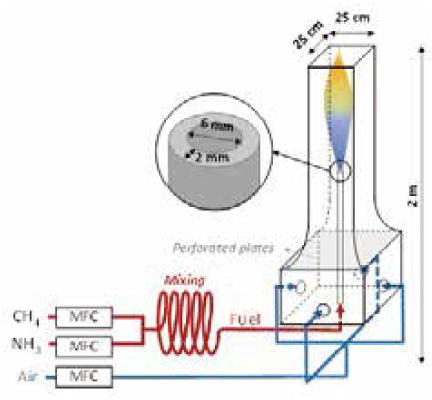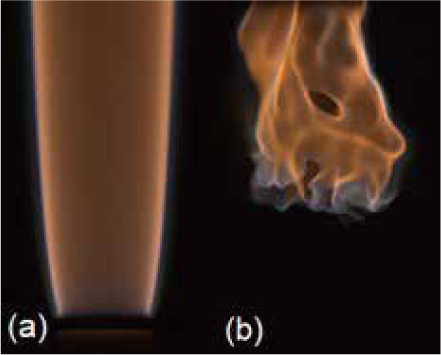Joint Research(Research Outline)
Research period: October 2017 – Present
カーボンフリーアンモニア混焼噴流拡散火炎の安定性
Stability of jet diffusion flames cofiring with carbon-free ammonia
Collaborating Institutions
- Institute of Fluid Science, Tohoku University
- Universities of Lyon
Combustion of Ammonia
Considering global warming, the importance of research on the combustion of carbon-free fuels such as ammonia is evident. However, because ammonia has a low combustion velocity compared to hydrocarbon fuels, flame stability is a problem. The use of swirl flow is an effective means to remedy this issue, and co-firing with more reactive fuels is thought to be another possible solution. Therefore, co-firing hydrogen in order to achieve complete carbon free operations and co-firing ammonia with hydrocarbons to achieve gradual carbon reduction are solutions that are currently being considered.
This international, collaborative research is aimed at bringing to light the factors controlling the stabilization of ammonia and/or methane flames. In this study, the effect of adding ammonia to methane flames was investigated by targeting non-premixed jet diffusion flames. Through controlled experiments, the expansion of the flame stability region, including lift-off and the reattachment limit, was made apparent. In order to further clarify the mechanism that brings about these transitions, a localized study of the attached flame leading up to lift-off was conducted.
-

図1 非予混合噴流火炎実験装置Figure 1. Non-premixed jet flame setup -

図2 アンモニア/メタン非予混合噴流火炎 (a) 付着火炎,(b) リフト火炎Figure 2. Ammonia/methane non-premixed jet flame (a) attached flame; (b) lifted flame
